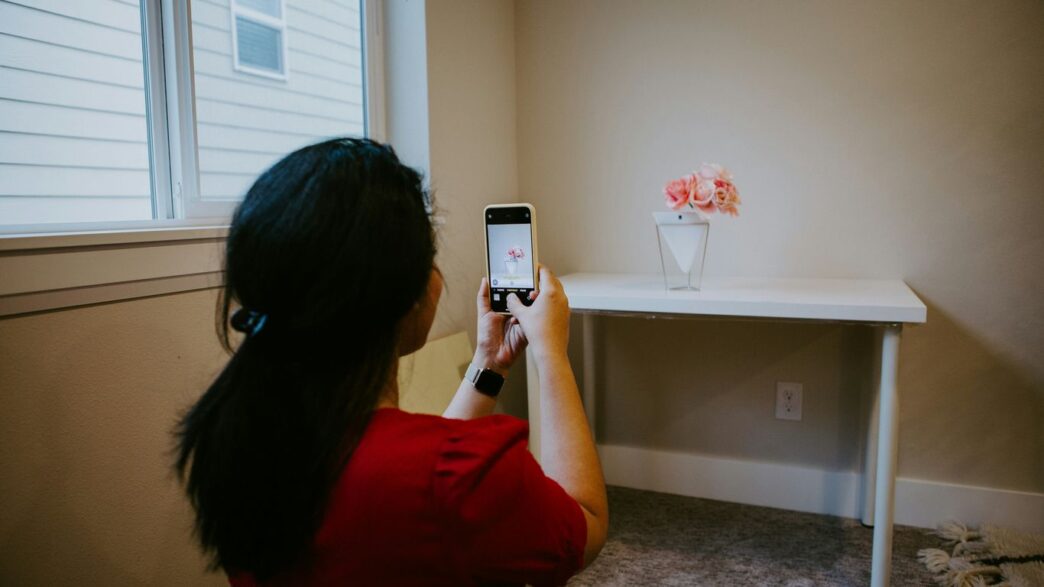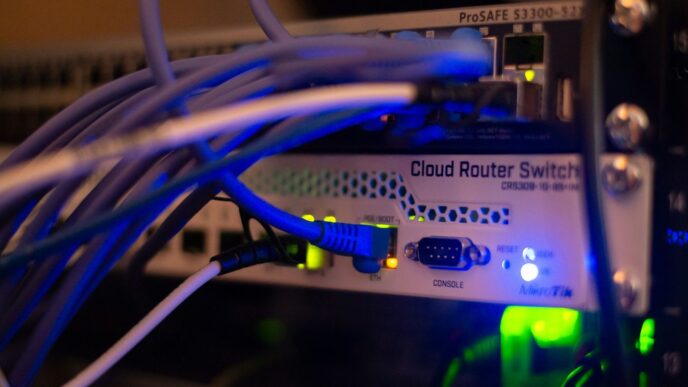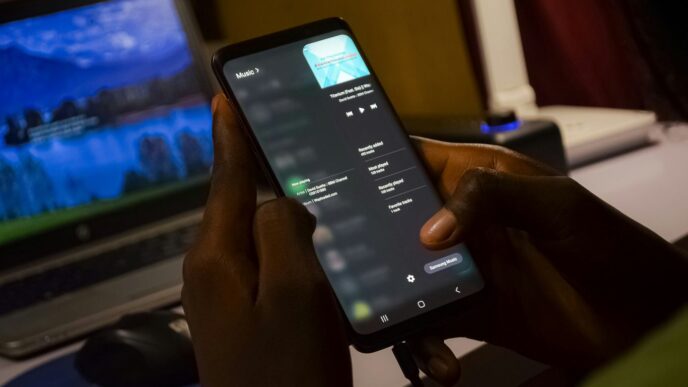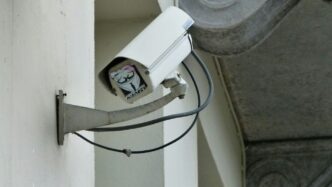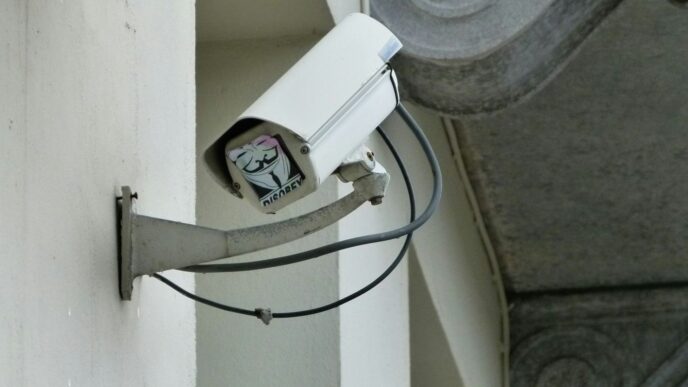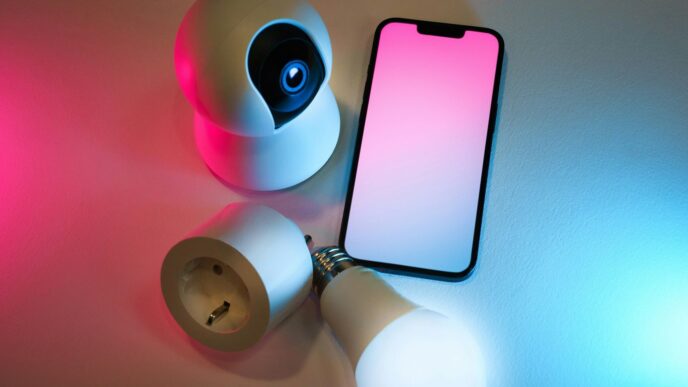So, you’re thinking about making your home a bit smarter, huh? It’s not like the Jetsons’ house yet, but things are getting pretty cool. With all the different smart gadgets and systems out there, it can feel like a lot to sort through. I’ve messed around with a bunch of these smart home apps and platforms, and honestly, picking the right one can make all the difference. Let’s look at some of the top contenders for the best smart home app in 2025, so you can get your house talking to itself without too much fuss.
Key Takeaways
- Home Assistant is often seen as the top choice for its wide compatibility and setup ease.
- Amazon Alexa excels with voice control and a large network of connected products.
- Google Home offers simple integration, especially if you’re already in the Google ecosystem.
- Apple HomeKit focuses on privacy and security for Apple users.
- SmartThings provides flexibility, connecting devices from many different brands.
1. Home Assistant
Home Assistant is a really interesting option if you like having a lot of control over your smart home. It’s an open-source platform, which means it’s built by a community of users and developers. One of the biggest pluses is that it runs mostly on your own hardware, not relying heavily on the cloud. This is great because even if your internet goes down, your smart home stuff can still work. It also plays nice with over a thousand different devices and services, including the newer Matter standard, making it super flexible.
It used to be just for the techy folks, but now it’s gotten a lot easier to use. If you’re not super into tinkering, you can get a device called Home Assistant Green, which is basically a ready-to-go hub. It makes setup pretty straightforward. For those who enjoy tweaking things, you can install it on a Raspberry Pi or other small computers. Either way, you end up with a lot of power over how your smart home operates.
Here’s a quick look at what makes it stand out:
- Local Control: Most of its operations happen on your network, not on some distant server. This means better privacy and reliability.
- Wide Compatibility: It supports a huge number of devices from different brands, so you’re not locked into one ecosystem.
- Customization: You can set up automations that are as simple or as complex as you want them to be.
Of course, it’s not for everyone. If you want something that’s super simple and just works right out of the box with minimal fuss, other options might feel a bit more user-friendly at first. But if you’re willing to put in a little effort, Home Assistant gives you a level of control that’s hard to beat.
2. Amazon Alexa
When it comes to voice control for your smart home, Amazon Alexa is a pretty big name. It’s widely considered one of the most accurate and responsive virtual assistants out there, which is a big deal when you just want your lights to turn on without repeating yourself five times. Alexa plays nice with a huge number of smart home gadgets, covering Wi-Fi, Bluetooth, Zigbee, and even the newer Matter standard. This means you can probably connect most of the stuff you already own or plan to buy.
What really makes Alexa stand out is its automation capabilities through "Routines" and "Skills." Think of Routines as custom commands you can set up. For example, you could have a "Good Morning" routine that turns on your lights, starts the coffee maker, and tells you the weather, all with a single voice command. Skills are like apps for Alexa, adding extra functionality, from playing games to ordering pizza.
Alexa is a fantastic choice if you prefer talking to your devices or if you’re building a smart home with gear from various brands. It’s also great for busy families. Setting up routines can genuinely simplify daily tasks, like getting everyone ready in the morning or winding down at night. Plus, there are some neat features like kid-friendly profiles for Echo devices or even a setting that can turn off the lights if it detects snoring.
However, it’s not perfect for everyone. Some people find the Alexa mobile app a bit cluttered and not the most straightforward to use. If you’re really concerned about privacy, Alexa’s always-listening nature and how Amazon uses your data might be a sticking point. Also, the app and Echo devices sometimes push suggestions or skills, which can get a little annoying if you just want to control your thermostat without a sales pitch.
Here’s a quick look at what Alexa brings to the table:
- Voice Control: Generally very accurate and responsive.
- Wide Compatibility: Works with thousands of devices across different technologies.
- Automation: Powerful Routines and a vast library of Skills.
- Ecosystem: Integrates well with Amazon’s own Echo devices.
While the app might take some getting used to, Alexa’s strength in voice commands and broad device support makes it a strong contender for many smart home setups in 2025.
3. Google Home
Google Home is a solid choice, especially if you’re already deep into the Google ecosystem or primarily use Android devices. The app itself is pretty straightforward, making it easy to get things set up without needing to be a tech wizard. You can link up a ton of different smart devices, and it plays nicely with the Matter standard, which is good for future-proofing your setup.
Setting up automations is generally simple. You know, like telling your lights to turn on when you get home or having your thermostat adjust at a certain time. Voice control is also pretty good, almost as responsive as Alexa’s in many situations. It’s a good option for beginners because the app guides you through most of the process.
However, if privacy is a big concern for you, Google Home might not be the top pick. While you can adjust some settings to limit data sharing, platforms like Home Assistant are often preferred by those who want more control over their data. Also, if your home is mostly Apple devices, you’ll probably find Apple HomeKit a more natural fit.
Google Home really shines with its intuitive interface and strong integration with Google’s own services.
Here’s a quick look at what makes it stand out:
- User-Friendly App: The interface is clean and easy to understand, even for newcomers.
- Good Voice Control: Google Assistant is quite capable of understanding commands and responding.
- Wide Device Compatibility: It works with a large number of smart home products, and supports Matter.
- Simple Automations: Creating routines to automate tasks is straightforward.
4. Apple HomeKit
If you’re deep into the Apple universe, HomeKit is probably your go-to for smart home stuff. It’s built right into your iPhone, iPad, and even your Apple Watch, making it super convenient. Think of it as Apple’s way of letting all your smart gadgets play nicely together.
The biggest draw here is privacy and security. Apple really emphasizes keeping your data locked down, which is a big deal for a lot of people. Plus, the Home app itself is pretty clean and easy to figure out. You can set up automations, like having your lights turn on when you get home, or have your thermostat adjust based on the time of day. It works with Siri too, so you can just talk to your devices.
HomeKit is also on board with the Matter standard, which is good news for compatibility. However, it’s not all sunshine and rainbows. HomeKit is pretty picky about what devices it works with. You need to make sure a device is specifically HomeKit-certified or Matter-compatible. If you’ve got a bunch of random smart gadgets from different brands, you might find your options are a bit limited compared to other systems. It’s definitely best if you’re already using Apple products and want a straightforward, secure system that fits right in.
5. SmartThings
SmartThings is a pretty solid option if you’re looking to tie a bunch of different smart gadgets together. It’s known for being really flexible, which is a big plus. You can connect all sorts of things, from your smart lights and plugs to security cameras and even thermostats, all through one app. This means you’re not stuck using only one brand for everything.
One of the best things about SmartThings is how many different brands it plays nice with. So, if you’ve already got some smart devices or you’re eyeing something specific from a particular company, chances are good it’ll work with SmartThings. This makes it easier to build out your smart home without running into compatibility headaches. The app itself is generally straightforward, letting you set up routines and control devices pretty easily. You can create automations, like having your lights turn on when a motion sensor is triggered, or get notifications if a door opens when you’re not home.
Here’s a quick look at what makes it stand out:
- Wide Device Compatibility: Works with a huge range of products from various manufacturers.
- User-Friendly App: Makes it simple to manage devices and set up automations.
- Automation Capabilities: Allows for custom routines based on triggers like time, sensor activity, or location.
- Hub Option: While the app can do a lot, a SmartThings hub can sometimes offer more robust local control and faster response times for certain setups.
6. IFTTT
IFTTT, which stands for "If This Then That," is a really neat service that lets you connect different apps and devices to automate tasks. Think of it like a digital matchmaker for your smart home gadgets and online services. You create "applets" – simple rules that say if something happens (the "This"), then do something else (the "That").
It’s super flexible because it works with a huge number of services, not just smart home stuff. You could set it up so that when your smart doorbell detects motion, it sends a notification to your phone and also turns on your porch light. Or maybe when you leave a certain location, your smart thermostat adjusts to save energy. IFTTT bridges the gap between devices and services that wouldn’t normally talk to each other.
Here are a few examples of what you can do:
- Morning Routine: When your alarm goes off on your phone, IFTTT can trigger your smart lights to turn on slowly and start your smart coffee maker.
- Security Alert: If your smart smoke detector senses smoke, IFTTT can send an alert to your phone and turn on all your smart lights to red.
- Energy Saving: When you leave home (detected by your phone’s location), IFTTT can automatically turn off all connected smart plugs and adjust your thermostat.
While it’s not a central hub in the same way as some other apps, IFTTT is a powerful tool for adding custom automations and making your smart home work in ways that are unique to you.
7. Hubitat
If you’re someone who really cares about keeping your smart home data private and wants things to happen fast, Hubitat is definitely worth a look. Unlike a lot of other systems that need the internet to work, Hubitat does its thing right there on its own hub. This means your commands get processed quicker, and your personal information stays on your network. It’s a pretty neat setup for folks who like having more direct control over their smart devices.
Hubitat plays nice with a whole bunch of different smart gadgets from various brands. This means you can mix and match lights, sensors, and other devices without running into compatibility headaches. It’s also got a tool called Rule Machine, which lets you set up some pretty complex automations. You can create rules based on all sorts of conditions, giving you a lot of flexibility in how your home operates. It’s not quite as simple as some of the big names out there, but for those who want local control and advanced options, Hubitat is a strong contender.
8. Best Smart Speaker
When you’re building out your smart home, a good smart speaker is pretty much the central hub for everything. It’s how you’ll talk to your devices, get information, and often, how you’ll play your music. There are a few big players in this space, and picking the right one often comes down to what ecosystem you’re already invested in, or what you plan to build around.
The Amazon Echo Studio is a solid choice if you’re looking for room-filling sound and advanced Alexa capabilities. It’s got this spatial audio thing going on that makes music sound pretty immersive, especially if you pair two of them up. Plus, Alexa can connect to a ton of smart home gadgets – think lights, locks, you name it. They’ve also rolled out Alexa Plus, which is a smarter, more helpful version of the assistant, and it’s free if you’re an Amazon Prime member. It’s a nice upgrade from the older Alexa versions, making it a good time to jump in if you want a voice assistant that really helps out.
Here’s a quick look at some popular options:
- Amazon Echo Dot: This is a really affordable option. It’s small, but it still packs a decent sound for its size, and it’s super easy to use. Great for starting out or adding voice control to more rooms without breaking the bank.
- Amazon Echo Show 5 (3rd Gen): While technically a smart display, it functions as a great smart speaker too. It’s got a nice screen for checking the weather or recipes, and it connects to lots of other smart devices. It’s a good all-around pick if you want a bit more than just audio.
- Google Nest Mini: If you’re more in the Google ecosystem, the Nest Mini is the equivalent to the Echo Dot. It offers good sound for its size and integrates well with Google Assistant and other Google services.
Choosing a smart speaker isn’t just about the sound quality, though that’s important. It’s also about how well it plays with your other smart devices and how useful the voice assistant is for your daily routine. Think about what you’ll use it for most – music, controlling lights, setting timers – and that will help guide you to the best fit.
9. Best Smart Display

Smart displays are kind of the central hub for a lot of smart homes these days. They’re not just for asking about the weather or setting a timer, though they do that really well. Think of them as a visual command center. You can see who’s at the door, check on your security cameras, or even follow along with a recipe right on the screen.
When picking one out, you’ve got a few main players. Amazon’s Echo Show line and Google’s Nest Hub series are the big ones. They both work with their own voice assistants, Alexa and Google Assistant (or Gemini for Home, as it’s becoming), respectively.
Here’s a quick look at what makes them useful:
- Visual Feedback: See your calendar, weather forecasts, or video feeds from cameras at a glance.
- Hands-Free Control: Use voice commands to play music, adjust lights, or get information without lifting a finger.
- Communication Hub: Make video calls or leave messages for family members.
- Recipe Assistant: Follow step-by-step cooking instructions displayed right on the screen.
For example, the Amazon Echo Show 5 (3rd Gen) is a solid choice if you want a compact device that syncs with tons of other smart gadgets. It’s got a decent screen for quick checks and is usually pretty affordable. If you want something a bit bigger, the Echo Show 8 (3rd Gen) steps up the screen size. On the Google side, the Nest Hub Max is a strong contender, especially with the newer Gemini for Home capabilities. It offers a good balance of screen size, sound quality, and integration with Google’s ecosystem. The best smart display for you really depends on which voice assistant you prefer and what other smart devices you already have or plan to get.
10. Best Smart Plug
Smart plugs are a really easy way to start making your home a bit more connected. They’re not super expensive and they do a simple job: let you control whatever’s plugged into them from your phone or with your voice. Think about never having to get out of bed to turn off a lamp, or making sure that curling iron is off after you’ve left the house. It’s pretty handy.
The TP-Link Kasa Mini is a solid choice for most people. It’s small, so it usually doesn’t block the other outlet on a wall socket, which is a nice bonus. Plus, the Kasa app is pretty straightforward. You can set schedules for your devices, like having your coffee maker turn on at 7 AM, or even use geofencing to turn things off when you leave home.
Here’s a quick look at what makes a good smart plug:
- Compatibility: Make sure it works with the smart home system you already use, like Amazon Alexa or Google Home. Some even work with Apple HomeKit.
- App Functionality: A good app lets you set schedules, timers, and maybe even control devices remotely from anywhere.
- Physical Design: Does it block other outlets? Is it too bulky for where you need to put it?
- Reliability: You want it to turn on and off when you tell it to, every time.
While the initial setup can sometimes be a little fiddly, once it’s connected, a good smart plug just works. It’s a small change that can add a good bit of convenience to your daily routine.
Wrapping It Up
So, building a smart home can seem like a lot at first, right? With all the different gadgets and apps out there, it’s easy to get a bit lost. But we’ve looked at some of the top apps that can really make controlling your home easier. Whether you’re all about voice commands with Alexa, like the way Google Home fits with your Android stuff, or prefer Apple’s focus on privacy, there’s likely an app that fits your life. The key is picking one that works well with the devices you have or plan to get. It’s not about having the fanciest tech, but about making your home work better for you. Take your time, figure out what you need most, and you’ll be living in your own little futuristic world before you know it.
Frequently Asked Questions
What is a smart home app?
A smart home app is a program on your phone or tablet that lets you control all your smart devices, like lights, speakers, and security cameras, from one place. It’s like a remote control for your whole house!
Do I need a special phone for a smart home app?
Nope! Most smart home apps work on both iPhones and Android phones. As long as your phone can download apps from its app store, you should be good to go.
Can I control devices from different brands with one app?
Sometimes! Many apps work with lots of different brands, but not all. It’s important to check if the app you choose works with the smart devices you already have or plan to buy.
What’s the difference between Alexa, Google Home, and Apple HomeKit?
These are like the ‘brains’ behind many smart homes. Alexa is from Amazon, Google Home is from Google, and Apple HomeKit is from Apple. They each have their own apps and work best with devices made for them, though many devices work with more than one.
Is it hard to set up a smart home app?
Setting up can range from super easy to a bit tricky, depending on the app and your devices. Many apps guide you step-by-step, making it simple to connect your gadgets.
Can smart home apps help save energy?
Yes, they can! You can use smart home apps to schedule lights to turn off when you don’t need them or adjust your thermostat to save power when you’re away, which can help lower your energy bills.


